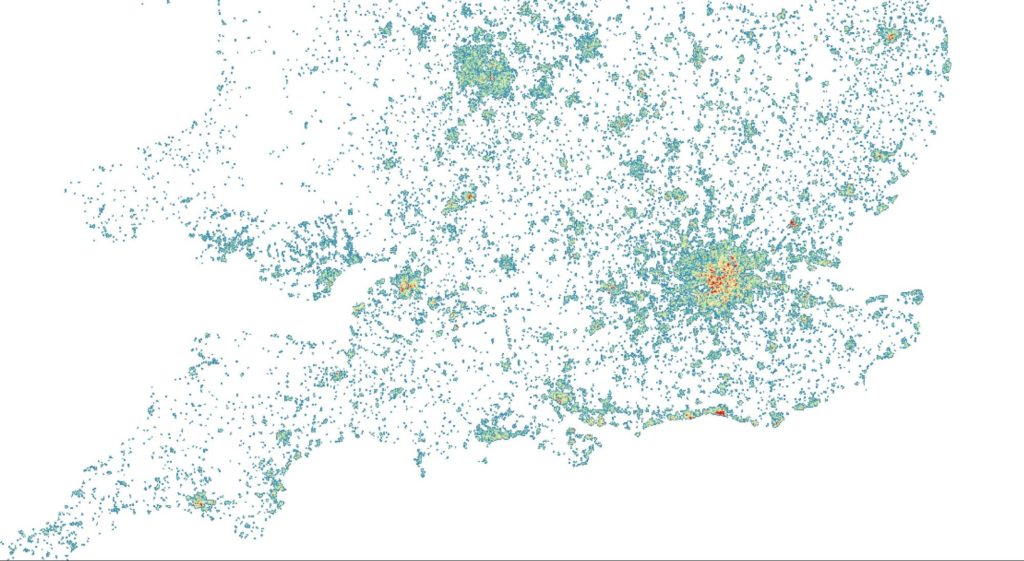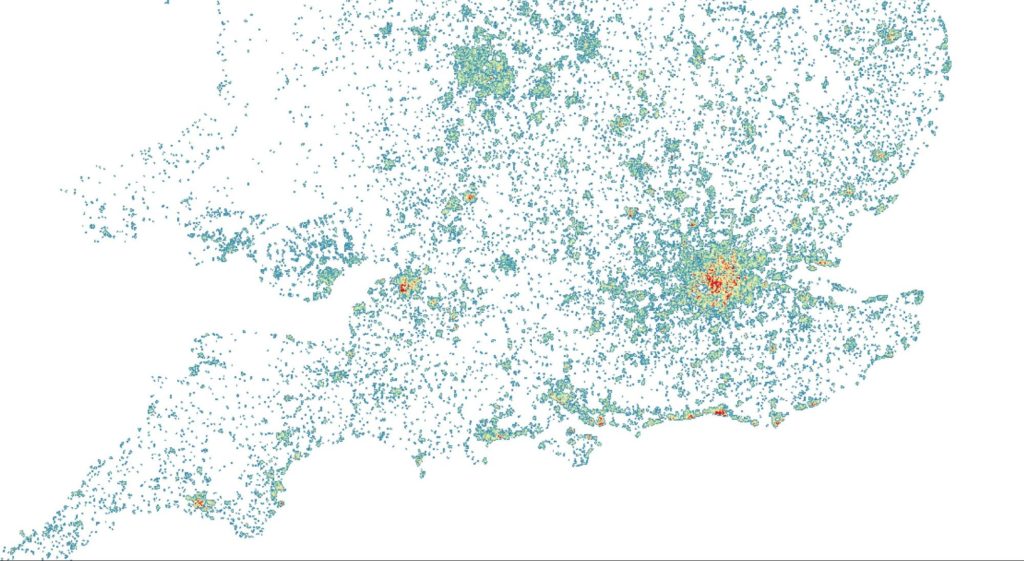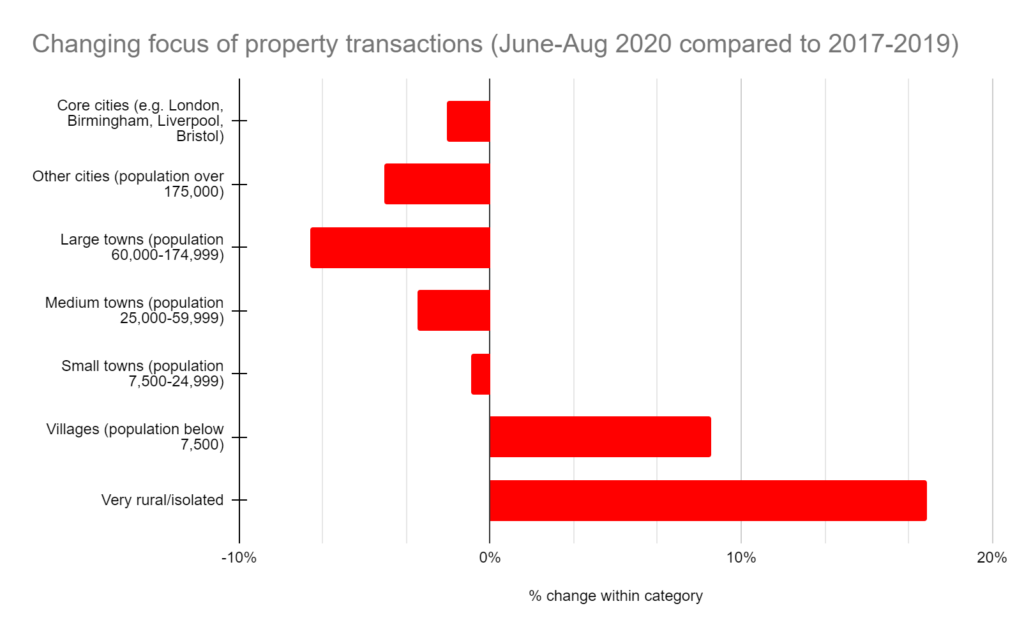Are we really escaping to the country?

There has been a lot of speculation1, 2, 3 that the COVID-19 pandemic is leading to a reshaping of the property market.
As it shifts away from the focus on cities and commuter belts, and moves towards more rural locations as people have proved quite conclusively that their job does not require them to be in an office five days a week.
Additionally, people have realised that the desire for a garden (and to have access to outside space during a lockdown), access to nature and a local community are not incompatible with the need to maintain a full time ‘office’ job. When the only requirement for being able to do your job (beyond your actual skills) is a decent broadband connection, then why tie yourself to a place you don’t really want to live in, just because it’s easier to get to work from there?
The furlough scheme has also inadvertently enabled people to reassess their homes, and allowed them to reflect on what is actually important to their lives. It’s not just the time saved from the commute, but a renewed appreciation of their surroundings, amenities, communities and, fundamentally, access to nature. Outside in the fields and on the hills, social distancing is an easy default position, a welcome respite from the realities of the pandemic, or even just a chance to finally learn the difference between a goldfinch and a goldcrest.
What we wanted to know was whether these clear intentions were already driving real world results in the property market. Whilst Rightmove and Zoopla saw high traffic towards rural property, is this actually translating into real life transactions? We took the last three month’s worth of data from our reporting database (which precedes actual sales as shown by the Land Registry’s Price Paid data as we provide reports for a purchaser earlier in the sale process) to see if we could spot any patterns compared to the previous few years. The results were perhaps unsurprising, but show some definite trends.
We looked at creating some ‘heat maps’ of transactions to see if we could identify trends, and though these are less useful for property transactions generally (as they just highlight areas with a greater density of housing), there were some interesting visual clues as to where the market is headed, with a much greater ‘scattering’ indicating a trend towards more rural areas.
2019 – Southern England detail

2020 – Southern England detail

However when we look at the classification of areas* in which transactions are taking place, we get a much clearer picture of the underlying trends.

The largest trend we saw was a move away from large towns/towns in conurbations (for example, Crawley, Basingstoke, Slough). Transactions in these areas, which are normally highly sought after for their proximity to larger urban areas and transport links, have fallen by 7% since the property market reopened. Conversely, transactions in areas classified as ‘Village or Small Community’ are up 9%, and transactions of very rural/isolated properties were also up around 17%. All these trends are well outside the standard deviation we see year on year.
Perhaps surprisingly, there has been no surge towards small towns, which have seen a small drop in demand (though well within standard deviation). It appears homebuyers in the wake of lockdown, are more willing to forgo town life altogether, rather than compromise somewhere in the middle.
We can see a very obvious shift away from urban, suburban and commuter town living towards a rural lifestyle, at least in the short term. Whether this will be a sustained pattern, and the effect this has on urban property prices, will have to be judged over a longer period, once the market has resettled. However it seems likely that rural communities, with decent facilities and infrastructure, will continue to see greater interest beyond historical expectations.
References
1 https://www.rsnonline.org.uk/lockdown-drives-demand-for-rural-property
2 https://www.telegraph.co.uk/family/life/long-city-lockdown-created-wave-panic-movers/
3 https://www.independent.co.uk/life-style/people-leaving-cities-london-manchester-coronavirus-pandemic-lockdown-a9612116.html
* Classification systems are taken from the House of Commons Library data, which gives highly detailed ratings for each census output area, enabling us to analyse the trends in a granular manner. We looked at the last three months worth of transactions compared to comparable time periods for the previous three years in order to establish our baseline and assess whether these trends were within normal deviation patterns or indicative of something more.
Date:
Sep 24, 2020
Author:
Drew Hardy

